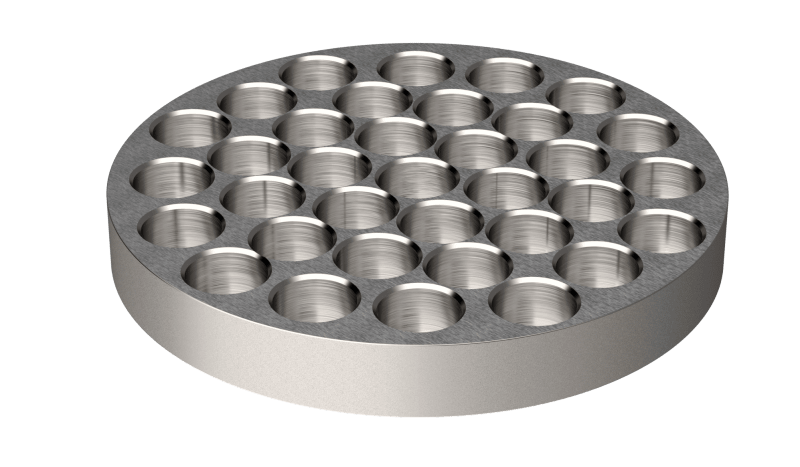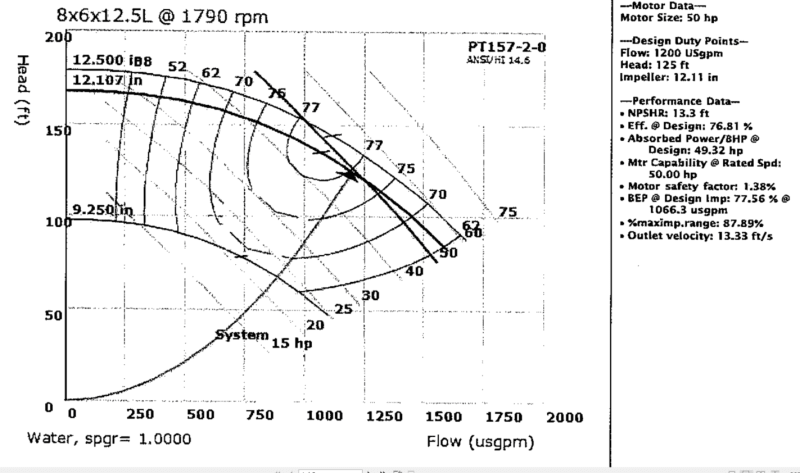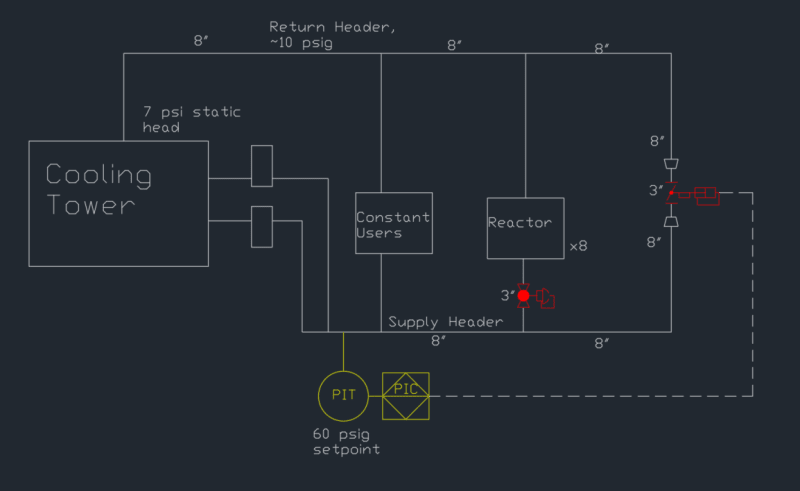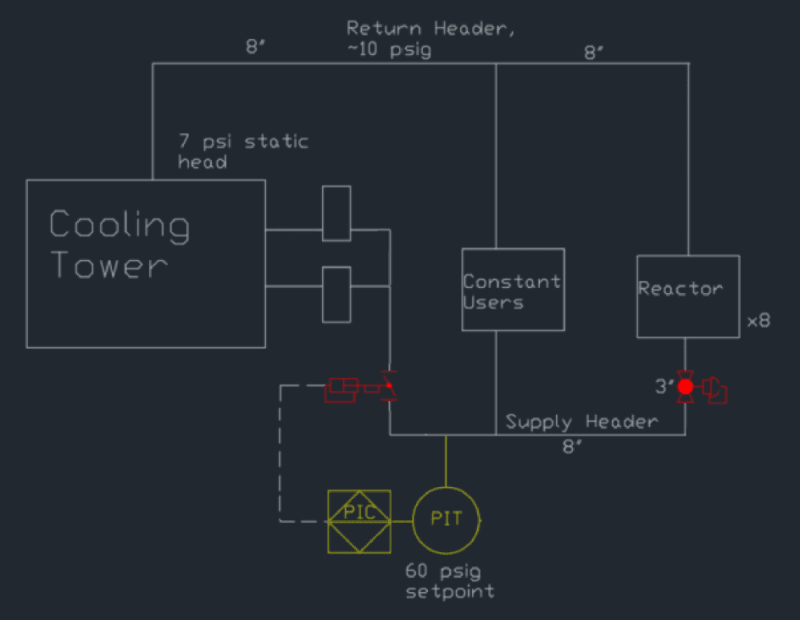We have a 3" butterfly pressure control valve installed on a cooling tower water recirculation loop. This valve is controlled to a pressure setpoint from a pressure transmitter located at the outlet of the cooling tower water pumps (combined header). The cooling tower water loop has a mix of constant users and sporadic users. Normal operation at no sporadic user demand is ~65% open on the valve; however, this valve often operates 0-20% open during heavy user demand to maintain supply header pressure. Some operating data is below:
Valve: Bray Series 30/31, 3"
Pressure setpoint: 60 psig (at CTW pump outlet)
Valve Upstream pressure: 50 psig
Valve Downstream pressure: 10 psig
Cv (20,40,65) = 15, 61, 210
Water temperature: 75 F
Main header: 8", reduces to 3" for the control valve
The 3" schedule 40 carbon steel pipe (ASTM A53, I think?) developed pinhole leaks about 3 months after installation. The valve disc and body itself look fine, but the weld line of the downstream flange and 1-2" of piping beyond the flange were worn extremely thin. Orientation-wise, this is the area where flow is directed by a partially open butterfly valve.
The up/downstream pressure vary slightly based on demand, but dP across the valve is usually 40-45 psi. I don't have equivalent orifice size to get actual flow rates, but at 60% open the valve is flowing ~1,300 gpm. In a 3" open pipe that is ~58 fps. (I don't have data or an equation on equivalent orifice diameter, but a naive assumption of %open = % reduction in equivalent orifice size would put velocity more in the neighborhood of 90 fps through the valve itself. I think we are likely cavitating in the liquid as it accelerates through the valve, and the downstream piping is bearing the brunt of the damage.
I've had maintenance hardface a new spool with 3/16" tungsten carbide in the wear area to be replaced, but I'm also considering putting in an upstream orifice to lessen the dP required by the valve.
Does anyone have any suggestions or caveats for putting an orifice upstream - i.e. minimum pipe diameters needed to full flow re-establishment? Space is tight, so something like 20D isn't available unless I put an orifice in the main 8" before the reducer.
Valve: Bray Series 30/31, 3"
Pressure setpoint: 60 psig (at CTW pump outlet)
Valve Upstream pressure: 50 psig
Valve Downstream pressure: 10 psig
Cv (20,40,65) = 15, 61, 210
Water temperature: 75 F
Main header: 8", reduces to 3" for the control valve
The 3" schedule 40 carbon steel pipe (ASTM A53, I think?) developed pinhole leaks about 3 months after installation. The valve disc and body itself look fine, but the weld line of the downstream flange and 1-2" of piping beyond the flange were worn extremely thin. Orientation-wise, this is the area where flow is directed by a partially open butterfly valve.
The up/downstream pressure vary slightly based on demand, but dP across the valve is usually 40-45 psi. I don't have equivalent orifice size to get actual flow rates, but at 60% open the valve is flowing ~1,300 gpm. In a 3" open pipe that is ~58 fps. (I don't have data or an equation on equivalent orifice diameter, but a naive assumption of %open = % reduction in equivalent orifice size would put velocity more in the neighborhood of 90 fps through the valve itself. I think we are likely cavitating in the liquid as it accelerates through the valve, and the downstream piping is bearing the brunt of the damage.
I've had maintenance hardface a new spool with 3/16" tungsten carbide in the wear area to be replaced, but I'm also considering putting in an upstream orifice to lessen the dP required by the valve.
Does anyone have any suggestions or caveats for putting an orifice upstream - i.e. minimum pipe diameters needed to full flow re-establishment? Space is tight, so something like 20D isn't available unless I put an orifice in the main 8" before the reducer.





